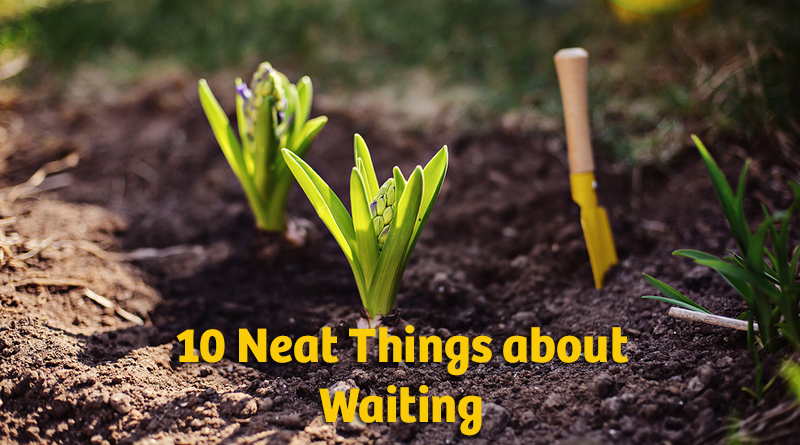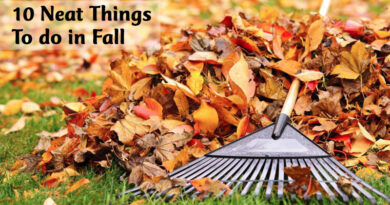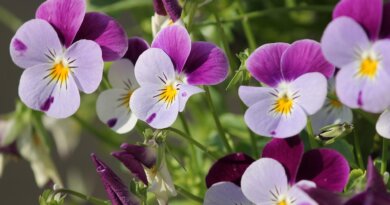About Waiting
        |
1. Waiting to plant.Across Canada, with the possible exception of the West Coast, Canadians wait till Victoria Day, which is the traditional planting day for gardeners. Have you ever wondered how it’s possible that, with such variation in climate zones, the whole country should be ready for planting on the exact same day? The answer is: it isn’t. The average last frost falls between May 14 and May 19 for Portage la Prairie, Altona and Selkirk, but not until June 15 in Thompson. Other dates in Manitoba are: Winnipeg, May 25; Brandon and The Pas, May 27; and in Swan River, Dauphin and Beausejour, between May 24 and May 29. 2. Not waiting to plant.You don’t have to wait for Victoria Day or even the last frost date for your area. Once the ground has thawed (and experience, or your experienced neighbour, tells you it’s likely to stay thawed) you can plant perennials, trees and shrubs and many annuals including pansies and petunias, and you can go ahead and scatter seeds for hardy annuals. Any annual that reseeds itself is hardy enough to put seeds down before the last frost. You better wait until it’s good and warm for pelargoniums, impatiens and sweet potato vine, though. 3. Stay off the grass.There is simply no reason to go bother your lawn as soon as the snow melts. You need to stay off the ground as much as possible while it is still squishy because trampling on it compacts the soil. And for goodness sake, put away the rake! Until it starts to turn green, the grass has not awakened. How would you like to be roused from your slumber by somebody giving you a vigourous brushing all over? 4. Waiting for blooms.How come my neighbour’s tulips came up before mine? With bulbs of the same variety, planted in similar earth on neighbouring lots with the same hours of sunlight, there are many reasons that they wouldn’t bloom at the same time. The most likely reason is that the slower-to-rise bulbs were planted deeper. Though the blooms come a little later, deeper planting has a couple of benefits. Deeper bulbs suffer less critter damage and are less likely to succumb to winters where they are only marginally hardy. 5. Pacing yourself.Apparently, you’re supposed to ease back into gardening rather than going at it for 14 hours on the first sunny weekend after the snow melts. It seems all your gardening muscles go soft over the winter and you’ll strain them. Personally, I think this advice comes either from non-gardeners or from gardeners whose average last frost dates are some time in February; they have no idea how long we’ve waited for spring up here. They’re the same people who urge you to do stretches before you hit the dirt. Stretching? Just sounds like more waiting to me. 6. How to wait.Surely no modern company puts more effort into the psychology of waiting than Disney. They have more than 75 engineers who work on queue management for attractions at their different parks with the goal of keeping customers happy. One way they do this is by offering related activities to waiting patrons—a kind of preview of the attraction without giving away any of the surprises. You can employ this sort of tactic while waiting for gardening time in the spring by visiting conservatories or, say, subscribing to a regional gardening publication at a place like www.localgardener.net. 7. Constructive waiting.Research shows that people are less irritated by waiting when they know how long the wait is expected to be. That’s easy enough for gardeners most years. (Though waits seem longer when the waiting time seems unfair… like when it snows after the tulips are up!) Interestingly, if you know you have a longer period of time to wait, you come up with more creative solutions to your problems, according to psychologist Robert Epstein, editor of Psychology Today. According to Epstein, “Even long periods of inactivity are eventually followed by breakthroughs. The main challenge is to teach people to relax while ‘nothing’ seems to be happening.” (Sounds like a Canadian winter.) 8. Time.The concept of time is so ingrained in us that it’s difficult even to define it. But its importance varies from one culture to another. In Hindi, the word for yesterday and tomorrow is the same and the language of the native North American Hopi people includes no words that relate to time or to the past, present or future. 9. The Kappa effect.According to psychologists, if you make two trips that each take an equal amount of time, the trip that covers more distance (because you were moving faster) will seem to take longer. That’s the Kappa effect. Conversely, the Tau effect holds that if you take two trips of the same distance, the one that takes longer to complete (because you’re moving more slowly) will be perceived as covering more distance. So… does this mean that if I move more slowly in my garden it will get bigger? And if I move faster, gardening will take more time? 10. Weight in the garden.Going back to #5, the first time I put my back out was in the spring garden, about ten years ago. There was a medium-sized planted container sitting on a chair on the other side of a new border I had just put some time into raking smooth. Loathe to step on the soil and too lazy to go around to get the container, I reached over—a little bit sideways, no less—and picked up the pot. (Snap.) So, as you don your gloves for the first time, try to remember that certain things are darned heavy and deserve your best lift-with-your-legs respect, including: watered planters, pavers and stones, new trees whether ball and burlap or in a container, shovels full of gravel, sand or earth, bags of manure or mulch, a 100-foot hose… anything but peat moss and coir, really. Be careful, or, better yet, find somebody who will carefully lug things around for you! –Shauna Dobbie Copyright© |




